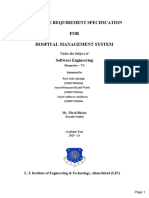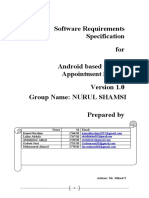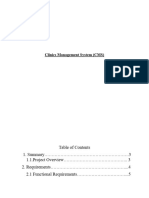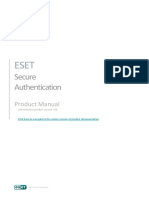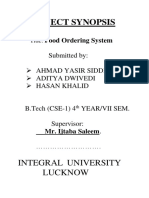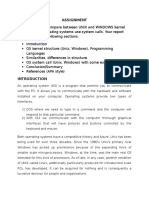0% found this document useful (0 votes)
112 views10 pagesSoftware Requirements Specification For
The document provides a software requirements specification for a healthcare maintenance system. It outlines the purpose of developing an automated system for patient scheduling, diagnosis notes, appointment reminders, paperless billing and reports. It describes the intended users of the system including doctors, patients, developers and medical staff. Finally, it provides an overview of the key product functions such as patient details, lab reports, billing and appointment management.
Uploaded by
Mr AmmarCopyright
© © All Rights Reserved
We take content rights seriously. If you suspect this is your content, claim it here.
Available Formats
Download as PDF, TXT or read online on Scribd
0% found this document useful (0 votes)
112 views10 pagesSoftware Requirements Specification For
The document provides a software requirements specification for a healthcare maintenance system. It outlines the purpose of developing an automated system for patient scheduling, diagnosis notes, appointment reminders, paperless billing and reports. It describes the intended users of the system including doctors, patients, developers and medical staff. Finally, it provides an overview of the key product functions such as patient details, lab reports, billing and appointment management.
Uploaded by
Mr AmmarCopyright
© © All Rights Reserved
We take content rights seriously. If you suspect this is your content, claim it here.
Available Formats
Download as PDF, TXT or read online on Scribd
/ 10








